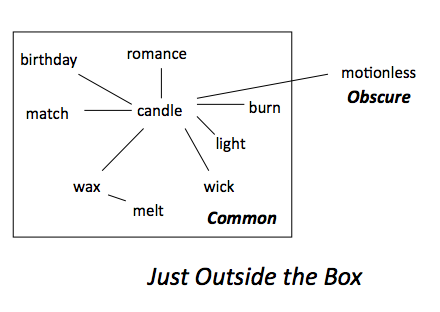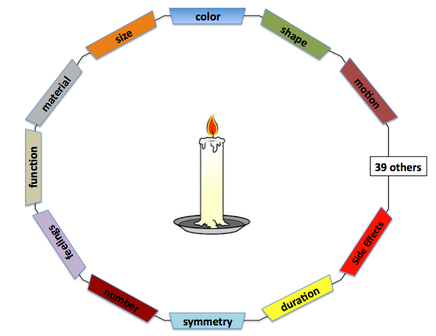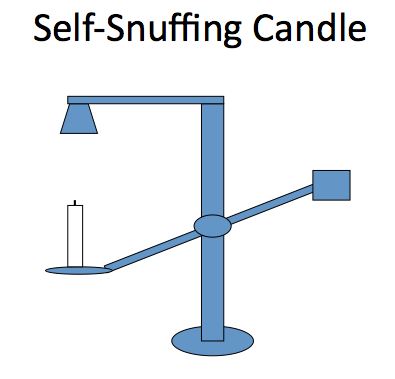A feature of an object is an effect of an interaction. New features then come from new interactions.
This definition, inspired by the philosopher Nietzsche, has broad implications for creativity.
1. New features come from new interactions. Superconductivity in ceramics resulted from a new interaction: a particular ceramic material interacting with electricity and a near-absolute-zero temperature. Interacting microwaves with candy in Percy Spencer's pocket led to the discovery of a new feature of microwaves--that they could cook food. In contrast, well-known features come from well-known interactions. Water conducts electricity. Water turns into ice at or below 32 degrees Fahrenheit. These common features of water result from common interactions.
2. Find new, obscure features of your object of interest by interacting it with things and conditions it has never interacted with before. For example, interacting a fluctuating electromagnetic field with a metal cooking pot heats up the pot, which cooks the food in the pot (i.e., induction cooking). Or, interact the concept of earbuds with the concept of a zipper and you get tangle-free earbuds--a new feature of both earbuds and zippers.
3. The number of features of an object most likely grows on a daily basis. Each day, patent offices around the world grant patents to new objects and materials. Interact any common object or material (e.g., rice) with the new objects and materials granted patents and you are sure to discover new features of the common object/material. For example, use can use rice to dry out your wet cell phone. Thus, you have a new feature of rice: the ability to salvage wet cell phones.
4. No feature of an object has a static value, but dynamically changes as circumstances change. The mass of an object, once thought to be an unchanging feature, increases as the object approaches the speed of light. Mass is the result of an interaction between the object and its speed. Recently, the mass of an object has been shown to result from interactions between the sub-atomic particles of the object and Higgs bosons. Similarly, all features we thought were static are really the result of interactions. Features do not "belong" to the object but "belong" to the interaction.
This definition, inspired by the philosopher Nietzsche, has broad implications for creativity.
1. New features come from new interactions. Superconductivity in ceramics resulted from a new interaction: a particular ceramic material interacting with electricity and a near-absolute-zero temperature. Interacting microwaves with candy in Percy Spencer's pocket led to the discovery of a new feature of microwaves--that they could cook food. In contrast, well-known features come from well-known interactions. Water conducts electricity. Water turns into ice at or below 32 degrees Fahrenheit. These common features of water result from common interactions.
2. Find new, obscure features of your object of interest by interacting it with things and conditions it has never interacted with before. For example, interacting a fluctuating electromagnetic field with a metal cooking pot heats up the pot, which cooks the food in the pot (i.e., induction cooking). Or, interact the concept of earbuds with the concept of a zipper and you get tangle-free earbuds--a new feature of both earbuds and zippers.
3. The number of features of an object most likely grows on a daily basis. Each day, patent offices around the world grant patents to new objects and materials. Interact any common object or material (e.g., rice) with the new objects and materials granted patents and you are sure to discover new features of the common object/material. For example, use can use rice to dry out your wet cell phone. Thus, you have a new feature of rice: the ability to salvage wet cell phones.
4. No feature of an object has a static value, but dynamically changes as circumstances change. The mass of an object, once thought to be an unchanging feature, increases as the object approaches the speed of light. Mass is the result of an interaction between the object and its speed. Recently, the mass of an object has been shown to result from interactions between the sub-atomic particles of the object and Higgs bosons. Similarly, all features we thought were static are really the result of interactions. Features do not "belong" to the object but "belong" to the interaction.



 RSS Feed
RSS Feed
